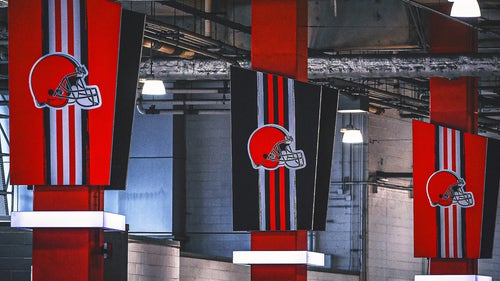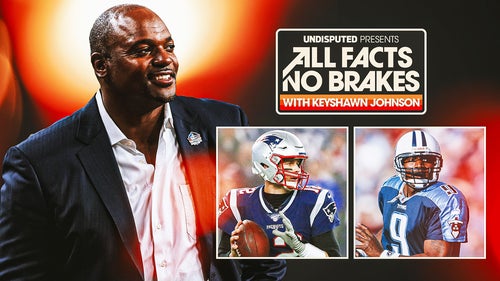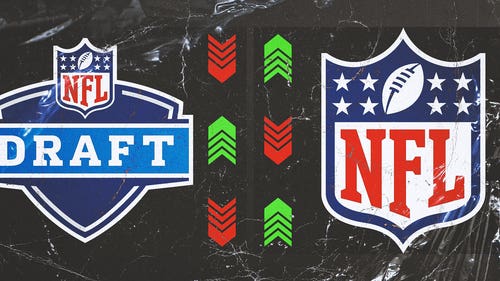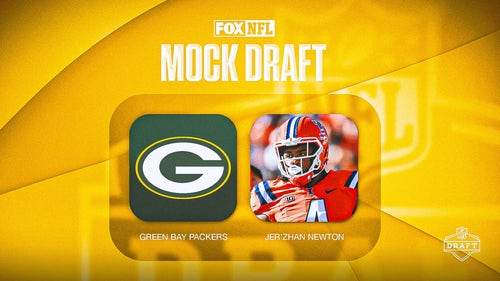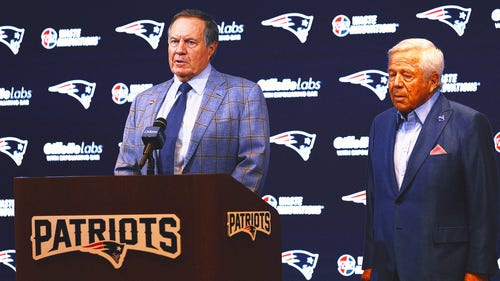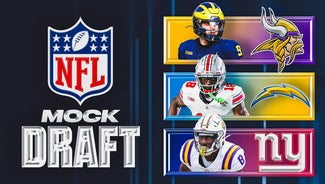
Denver-Kansas City: How Chiefs beat Broncos in a must-win game
In the impressively competitive AFC -- where 11 of the 16 teams are .500 or better -- we may be watching a developing race that will require teams to win at least 10 games to have a shot at the playoffs. The Chiefs -- currently 7-4 -- should be treating their upcoming contest in Arrowhead Stadium with the AFC West-leading Broncos as a must-win situation.
Kansas City has not beaten Peyton Manning since he joined the division, and the Chiefs are coming off an embarrassing game against Oakland where they became that team that lost to the Raiders, who had gone 368 days without winning a game. Eager to put an ugly loss behind them and themselves in clear contention for a playoff berth, the Chiefs must find a way to beat the Broncos, who beat them in Week 2 in Denver by one score.
Denver has shown vulnerability. Last week the Broncos had to rally from an 11-point, fourth-quarter deficit to defeat the Dolphins, 39-36, but even in victory they suffered loss. Linebacker Brandon Marshall -- the team’s leading tackler and one of the best run defenders in the league -- suffered brain trauma and is currently in the NFL’s post-concussion protocol, so an already depleted linebacker corps got weaker at the wrong time. Additionally, cornerbacks Aqib Talib and Kayvon Webster are both day-to-day with hamstring and shoulder injuries, respectively.
Kansas City ranks third in the NFL at 4.7 yards per carry and fourth with 137.1 rush yards per game. At their best, they effectively run the rock, playing keep-away masterfully. Keeping Manning off the field is the absolute best way to beat the Broncos -- and putting Alex Smith in a position where he can be an efficient game manager, as opposed to asking him to carry the team on his arm.
Only three teams have turned the ball over fewer times in 2014 than the Chiefs (10), and only Aaron Rodgers (three) of the Packers has thrown fewer interceptions than Smith (four) this season. In Smith’s best performances of 2014, though, he was complemented by a pummeling and pressure-relieving ground game.
The Chiefs averaged 35 rushes in victories over Miami (174 yards rushing), New England (207 yards rushing), St. Louis (223 yards rushing) and Seattle (190 yards rushing). In those games, Smith completed 76 percent of his passes against Miami, 76.9 percent against New England, 86.2 percent against St. Louis and had to throw only 16 passes against Seattle -- the fewest number of attempted passes by any starting QB in a full game this season. The Seahawks simply couldn’t stop the Chiefs’ run game.
It’s clear the Chiefs are a much better team when they establish the run, and Smith is a better QB. In his career as a starter, he’s 45-20-1 with a 85.8 passer rating when his team rushes for 100 yards or more. Those figures jump to 24-3-1 and 94.9 when it’s 150 yards or more.
The Chiefs must crack the code of Denver’s raucous and repellant run defense. Here are some of the Chiefs’ best plays they’ve shown on tape, which will be on full display Sunday night and give Kansas City its best shot at romping Denver and keeping its playoff hopes alive.
One-back O-play: Jamaal Charles one-on-one with LB in the hole
Kansas City ran the O-play with great success against Seattle -- currently the league’s sixth-best run defense allowing only 88.4 yards per game -- and it’s one of the reasons Smith had to throw only 16 passes in that game.
The O-play is designed to leave the backside linebacker unblocked -- allowing for a double team with the center and frontside guard on the nose tackle. When the offside guard (hence “O”-play) pulls to take on the frontside linebacker, it results in a matchup in which the backside linebacker is forced to make a one-on-one tackle against Jamaal Charles in the hole. Here’s how it’s drawn up:

Here’s a shot of the moment of truth for the unblocked linebacker (K.J. Wright in white circle) and Charles (yellow circle) -- mano y mano.
Whoever wins this confrontation becomes the hero on this play. Have you ever heard the expression “make you miss in a phone booth?”

Charles did Wright wrong.
He made him miss the tackle, and this was the result:

With Denver’s backside linebackers being left unblocked against the Chiefs’ O-play, they’ll be forced to attempt to get Charles on the ground one-on-one in the hole. These are plays that Denver’s LBs must make, or it’ll be a long night for the Broncos’ defense.
Two-back stretch-divide play
The two-back stretch-divide play challenges linebackers because it’s disguised to look like the divide play or “bend-back play.” In the bend-back play, the linebackers’ key -- the fullback -- tells them to fall back to fit the run on the backside of the play. The ball carrier keeps his shoulders square to the line of scrimmage as he takes two steps to the frontside of the play, and then bends it back to the backside of the play, following his fullback.
Here’s how the original divide or bend-back play is drawn up:

But against the Chiefs, the linebackers have an extra challenge. They have to expand their vision to see one small detail: the shoulders of the running back. In the stretch-divide play, the running back (Charles here) actually keeps the ball to the frontside of the play. The only way the linebackers can tell the difference between the divide and the stretch-divide is to see Charles’ shoulders.
That’s the key that tells them to stay to the frontside of the play against the stretch-divide as opposed to falling the backside against the divide/bend-back play. Here’s how the stretch-divide looks:

The Seahawks’ linebackers did not read Charles’ shoulders on this play, so they fell back with the fullback to the backside of the play. Charles stretched the ball to the frontside, and the result was an explosive run play for the Chiefs.
When the Chiefs run this play Sunday night against the Broncos, the linebackers must expand their vision to see Charles’ shoulders. If they fall back to play the divide play when it’s actually the stretch-divide, it will leave the frontside of the play wide open for Charles to find a crease. He found a crease against Seattle and took it 16 yards to the house.
Play-action: How it comes together for the Chiefs
In Kansas City’s best games, they’ve been able to continuously tap a defense’s pressure points with the run game. Eventually, defenders get fed up with getting pounded by the run so they step outside of their responsibility and become over-aggressive to try to stop it -- and they end up leaving their defense vulnerable to the play-action pass. This is when Alex Smith shines.
When Kansas City has the ground game humming, Smith is more comfortable as the Chiefs are able to lean on efficient passing concepts -- especially play-action passes like the one we’ll look at here.
In the first photo, you’ll see how the play-action pass is drawn up, and how the defense (which is playing Cover 3 to stop the run) should drop to cover the routes. Especially important for the defense (against play-action pass when playing Cover 3) are the four underneath zone droppers (circled), who must quickly drop back underneath any crossing or intermediate-level routes to prevent a big play. In this photo, I’ve highlighted (with a green circle) the zone dropper who ends up becoming the liability for the defense in this coverage.

In the next photo, you can see the defender circled in green was fooled by the run fake to Charles. He fell for it hard too.
The defender is almost five yards in the offensive backfield when he should be dropping back into zone coverage like the other defenders. The zone is now left wide open.

Here’s the result -- an explosive pass play for the Chiefs:

While Kansas City boasts the league’s best pass defense and is tied for second in the league allowing only 17.7 points per game, the Broncos’ offense is third in the league averaging over 400 total yards per game and fifth with over 30 points per contest. Denver and Manning will have a rough go at it, but they will find ways to get points. One key that will decide the outcome of this game will be whether or not the Chiefs can outscore the Broncos by establishing the run game that has already led them to seven victories this season.
If Denver is able to shut down Charles and the Chiefs’ O-play and stretch-divide, and prevent the easy strikes from Smith on play-action passes, the Broncos will put a major hurdle in front of the Chiefs as they try to get back on track and make another stride toward the postseason.
However, the Chiefs have played some of their best ball at home, posting a 4-1 record at Arrowhead this season. Smith is better there, too, as he’s a 70.1 percent passer at home -- almost 10 percentage points higher than on the road. But if the Chiefs want to make a serious run at the playoffs, they’ll do it by running the ball, and they must start Sunday against Denver in a must-win game.
Coy Wire played college football at Stanford before a nine-year NFL career in Buffalo and Atlanta. He's currently a college football analyst for FOX Sports 1 and writes for FOXSports.com. Follow him on Twitter @CoyWire.







































































































































